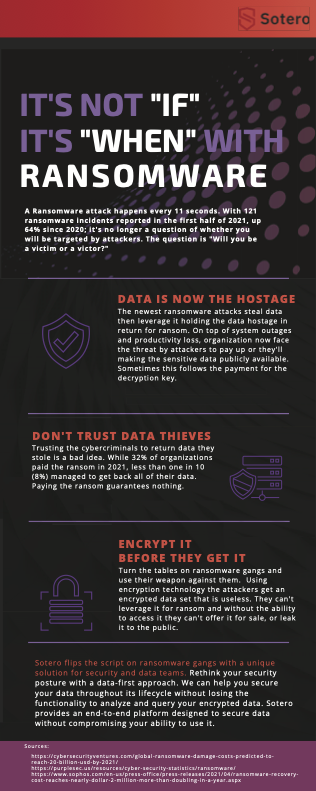Data encryption technology is a powerful weapons. We see data encryption used too often by cybercriminals to hold a victim organization’s information for ransom. Using malware that employs data encryption, the user or organization’s critical data is encrypted so that no one within the company can access files, databases, or applications. A large amount of money, usually in the form of cryptocurrency, is then demanded as ransom to provide decryption keys that will restore access.
The newest evolution of ransomware attacks is more sinister than the basic “pay to decrypt” attack. Cybercriminals realized data is an organization’s most valuable asset. Newer ransomware attacks steal the data and leverage its value by holding the data hostage. This exponentially increases the risk of data and intellectual property loss. The impact is crippling when combined with the cost of system outages and operational challenges. Organizations are often willing to pay to avoid their sensitive data becoming publicly available. What if you could flip the script on them and use encryption against them?
Data encryption technology may not be the first thing in your mind when thinking of ransomware protection, but it is a powerful defense. When data at rest, in transit, and in use is encrypted, it prevents others from stealing the information contained for other purposes. The only thing cybercriminals get is a useless encrypted dataset. They can’t leverage it for ransom because you own the encryption keys. Without the ability to access the data in a decrypted form, they can’t offer it for sale or leak it to the public. They’re effectively stymied by the very tool they employ.
In the infographic, we share some key reasons your organization should consider adding data encryption to its arsenal for the fight against ransomware. It’s not the only tool we suggest, but it is a powerful one.

